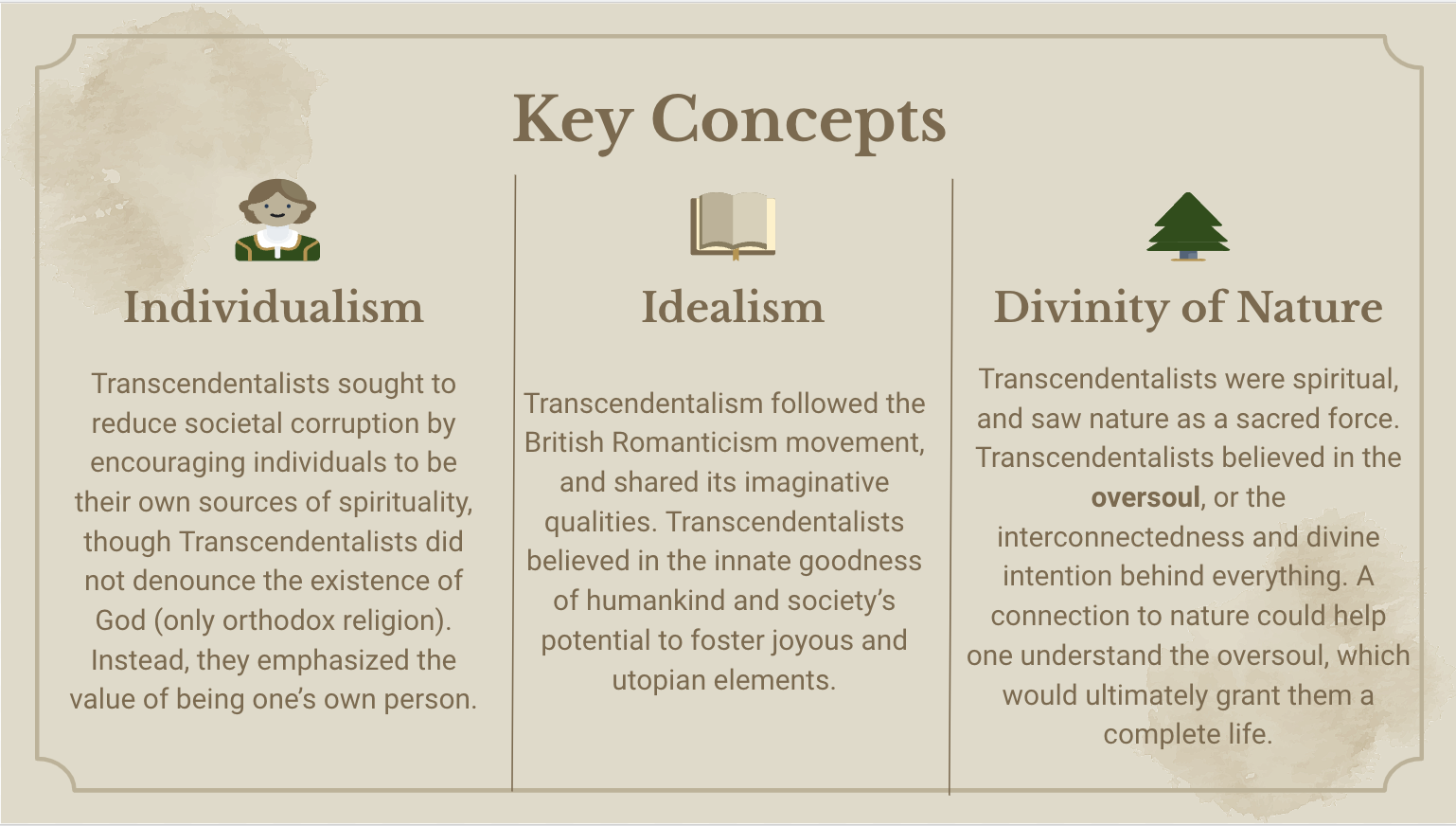A Comprehensive Introduction to Transcendentalism
A Comprehensive Introduction to Transcendentalism
In this lesson plan, students will learn about the literary Transcendentalism movement in America, from the key concepts and characteristics of Transcendentalism to the most important figures of the movement. Students will practice literary analysis through SOAPSTones, reflective journaling, class discussion, and rhetorical analysis. Additionally, students will learn about the Asian cultural and religious ideologies that influenced Transcendentalism (e.g. Hinduism and Confucianism) to develop a comprehensive understanding of Transcendentalism’s origins and impact.
Learning Objectives:
Students will identify and explain the causes, effects, and characteristics of the Transcendentalist movement and Transcendentalist texts in a short paragraph.
Using an example from the literature examined in class, students will be able to demonstrate an understanding of the varying Asian cultural and religious ideologies (i.e. Hinduism and Confucianism) that influenced Transcendentalist thought and identify these ideologies in the context of American Transcendentalism.
Students will apply their knowledge of American Transcendentalism and the related Asian cultural and religious concepts to prominent Transcendentalist works to analyze related themes, identify examples of rhetorical devices (i.e. how ethos, pathos, and logos are created in a given text), and develop nuanced interpretations of the texts introduced in class.
Essential Questions:
What is Transcendentalism and what did the movement aim to accomplish?
How did Transcendentalism affect American society and through what means?
Who led the Transcendentalist movement and what texts did they create?
How did Hinduism and Confucianism influence the creation of Transcendentalist literature?
What aspects of Hinduism and Confucianism are prevalent in Transcendentalist literature?
How are they similar to the characteristics/concepts of Transcendentalism?
Slideshow Preview
The standards covered in this lesson are: CCSS.ELA-LITERACY.WHST.11-12.1, CCSS.ELA-LITERACY.WHST.11-12.7, CCSS.ELA-LITERACY.WHST.11-12.8, CCSS.ELA-LITERACY.WHST.11-12.9, CCSS.ELA-LITERACY.WHST.11-12.4, CCSS.ELA-LITERACY.WHST.11-12.2.B, CCSS.ELA-LITERACY.WHST.11-12.1.B, CCSS.ELA-LITERACY.WHST.11-12.1.A, CCSS.ELA-LITERACY.WHST.9-10.1.A, CCSS.ELA-LITERACY.WHST.9-10.1.B, CCSS.ELA-LITERACY.WHST.9-10.10, APLANG.CLE.4.A, APLANG.REO.6.C, APLANG.STL.8.B, APLANG.STL.7.A, APLANG.RHS.1.A
Lesson plan created by Anusha Nadkarni in partnership with OCA-Asian Pacific American Advocates





